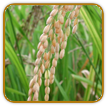|
Home > Guides > Grains |
|
Guide to Growing Grains |
|
|
|
Heirloom seeds are the gardeners choice for seed-saving from year-to-year. Learning to save seeds is easy and fun with these books. Before you harvest, consider which varieties you might want to save seeds from so that your harvesting practice includes plants chosen for seed saving. Be sure to check out our newest seed packs, available now from Heirloom Organics. The Super Food Garden is the most nutrient dense garden you can build and everything you need is right here in one pack. The Genesis Garden s a very popular Bible Garden collection. The Three Sisters Garden was the first example of companion planting in Native American culture. See all of our brand-new seed pack offerings in our store.
|
|
|
| |
|
|
| |
|
|
| |
 |
Guide to Growing Amaranth
Once considered a simple weed in the United States, this nutritious annual is finally being acknowledged as the nourishing high-protein food it is. Amaranth greens have a delicious, slightly sweet flavor and can be used both in cooking and for salads. The seeds are used as cereal or can be ground into flour for bread.
|
| |
 |
Guide to Growing Barley
This hardy grain dates back to the Stone Age and has been used throughout the eons in dishes ranging from cereals to breads to soups. Most of the barley grown in the Western world is used either for animal fodder or, when malted, to make beer and whiskey.
|
| |
 |
Guide to Growing Corn
Throughout Europe, "corn" has always been the generic name for any of the cereal grains; Europeans call corn maize, a derivative of the early American Indian word mahiz. Corn is not only a popular food, but the foundation of many by-products including bourbon, corn flour, cornmeal, corn oil, cornstarch, corn syrup, corn whiskey and laundry starch. |
| |
 |
Guide to Growing Flax
Flax of has been cultivated since prehistoric times. It is cultivated as a fiber plant; it is also grown in many tropical countries for its oil-bearing seeds. When grown for fiber, flax is sown densely to prevent branching and is gathered before maturity.
|
| |
 |
Guide to Growing Kamut
Considered by some to be the great-great grandfather of grains, kamut is a variety of high-protein wheat that has never been hybridized. Kamut's kernels are two to three times the size of most wheat. Not only does this grain have a deliciously nutty flavor, but it also has a higher nutritional value than its modern-day counterparts.
|
| |
 |
Guide to Growing Millet
Though America cultivates this cereal grass almost exclusively for fodder and bird seed, millet is a staple for almost 1⁄3 of the world's population, particularly in disadvantaged regions of Asia and Africa. |
| |
 |
Guide to Growing Oats
The common oat plant is a species of cereal grain grown for its seed, which is known by the same name. While oats are suitable for human consumption as oatmeal and rolled oats, one of the most common uses is as livestock feed.
|
| |
 |
Guide to Growing Quinoa
Although quinoa is new to the American market, it was a staple of the ancient Incas, who called it "the mother grain." To this day it's an important food in South American cuisine. Hailed as the "supergrain of the future," quinoa contains more protein than any other grain.
|
| |
 |
Guide to Growing Rice
Today, rice is a staple for almost half the world's population-particularly in parts of China, India, Indonesia, Japan and Southeast Asia. Rice is commercially classified by its size-long-, medium- or short-grain. |
| |
 |
Guide to Growing Rye
Cereal grass and its edible grain, used to make rye bread and rye whiskey, as livestock feed, and as a pasture plant. Native to South Asia, today it is grown extensively in Europe, Asia, and North America.
|
| |
 |
Guide to Growing Spelt
Native to southern Europe, where it's been used for millenniums, spelt is an ancient cereal grain that has a mellow nutty flavor. The easily digestible spelt has a slightly higher protein content than wheat and can be tolerated by those with wheat allergies.
|
| |
 |
Guide to Growing Wheat
Wheat is the world's largest cereal-grass crop. Its status as a staple is second only to rice. One reason for its popularity is that-unlike other cereals-wheat contains a relatively high amount of gluten, the protein that provides the elasticity necessary for excellent breadmaking. |
| |
|
| |
|
|
|
| |
|
|
|
|
|
  
   |
|
| Click the packs below to see some of our other wonderful products |
|
|
|
|
|
|
|